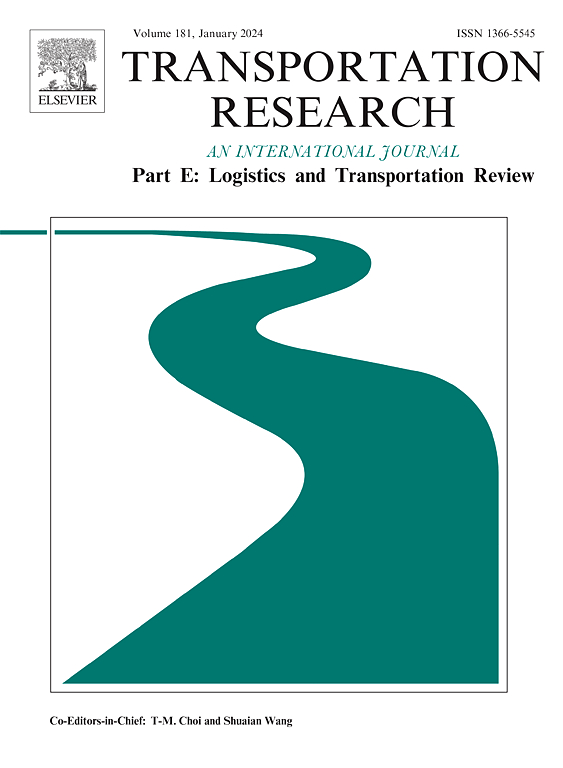海产品供应链中的保鲜模式与渠道领导:冷藏与冷冻策略的比较研究
IF 8.8
1区 工程技术
Q1 ECONOMICS
Transportation Research Part E-Logistics and Transportation Review
Pub Date : 2025-08-05
DOI:10.1016/j.tre.2025.104355
引用次数: 0
摘要
海鲜的保存是生鲜食品供应链中的一个关键挑战,特别是在处理复杂的双渠道模式和领导动态时。本文调查了保存方法(冷藏与冷冻)和领导结构(集中与分散)对海鲜供应链的影响。我们研究了供应商和零售商在保存模式选择方面的战略决策,并探讨了供应商或零售商主导的供应链的优势。通过结合扩展模型的见解,我们强调了混合销售渠道,结合冷冻和冷冻模式,如何在与固定成本和可变成本相关的特定条件下优于单一模式。此外,我们还研究了分散供应链优于集中式系统的条件,特别是在产品新鲜度和零售商响应能力至关重要的市场。通过比较分析,我们揭示了供应链模式之间权衡的临界阈值,强调了成本结构的重要性,并提出了成本分担合同,以加强协调和激励冷链物流的投资。本研究有助于了解生鲜食品供应链、保鲜技术、混合销售模式和领导动态,为优化海产品供应链运营提供实际意义。本文章由计算机程序翻译,如有差异,请以英文原文为准。
Preservation modes and channel leadership in seafood supply chains: A comparative study of chilled and frozen strategies
The preservation of seafood is a critical challenge in the fresh food supply chain, particularly when navigating the complexities of dual-channel models and leadership dynamics. This paper investigates the impact of preservation methods (chilled vs. frozen) and leadership structures (centralized vs. decentralized) on seafood supply chains. We examine the strategic decisions of suppliers and retailers regarding preservation mode selection and explore the advantages of supplier- or retailer-dominated supply chains. By incorporating insights from extension models, we highlight how hybrid sales channels, combining chilled and frozen modes, can outperform a single mode under specific conditions related to fixed and variable costs. Additionally, we investigate the conditions under which decentralized supply chains can outperform centralized systems, particularly in markets where product freshness and retailer responsiveness are crucial. Through a comparative analysis, we reveal critical thresholds for trade-offs between supply chain models, emphasizing the importance of cost structures, and propose cost-sharing contracts to enhance coordination and incentivize investment in cold chain logistics. This study contributes to the understanding of fresh food supply chains, preservation technologies, hybrid sales modes, and leadership dynamics, offering practical implications for optimizing seafood supply chain operations.
求助全文
通过发布文献求助,成功后即可免费获取论文全文。
去求助
来源期刊
CiteScore
16.20
自引率
16.00%
发文量
285
审稿时长
62 days
期刊介绍:
Transportation Research Part E: Logistics and Transportation Review is a reputable journal that publishes high-quality articles covering a wide range of topics in the field of logistics and transportation research. The journal welcomes submissions on various subjects, including transport economics, transport infrastructure and investment appraisal, evaluation of public policies related to transportation, empirical and analytical studies of logistics management practices and performance, logistics and operations models, and logistics and supply chain management.
Part E aims to provide informative and well-researched articles that contribute to the understanding and advancement of the field. The content of the journal is complementary to other prestigious journals in transportation research, such as Transportation Research Part A: Policy and Practice, Part B: Methodological, Part C: Emerging Technologies, Part D: Transport and Environment, and Part F: Traffic Psychology and Behaviour. Together, these journals form a comprehensive and cohesive reference for current research in transportation science.

 求助内容:
求助内容: 应助结果提醒方式:
应助结果提醒方式:


